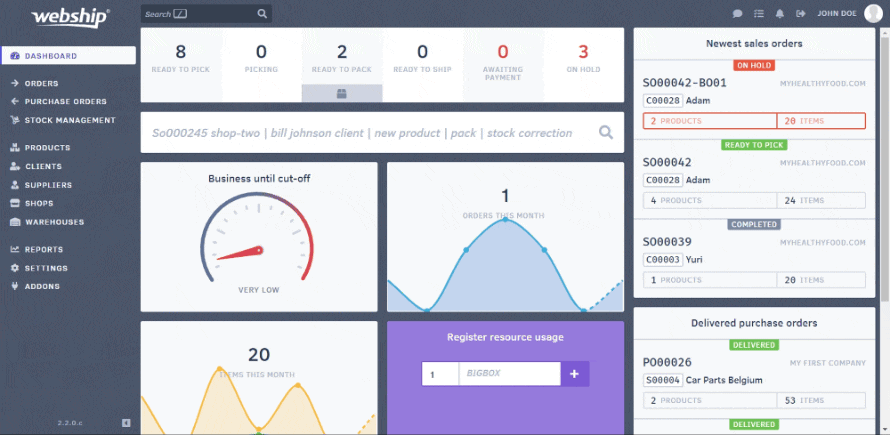Even before you get started with Webship Online, you need to clearly distinguish between a product code (also called SKU) and a product’s barcode. Sometimes the two get mixed up, so we will briefly summarise the difference between both.
Product code
The product code or SKU is the unique code of each product. It allows you to identify and manage products easily. You can determine the product code yourself, but you can also use your supplier’s SKU. This way you don’t have to keep track of whether the code is unique, and that code is often already displayed on your products’ packaging anyway. If you do prefer to determine your own code, keep the following in mind:
- Think about using a fixed structure (standard length and form) across different products & product types in advance, so you can always work according to a fixed pattern
- Never start with a “0” (zero). This can cause problems when exporting to Excel where zeros that are placed at the front of a string are automatically omitted.
- Avoids special characters
- Create logical sequences
If you assign an already existing SKU to a new product by accident, Webship Online will notify you.
If you’d like to know more about product codes, check out our blog “The importance of product codes in a warehouse”.
Barcode
Barcodes can be used to identify a product in addition to the product code. When you sell your products in physical stores or on certain online marketplaces, a barcode is usually required. You will need to use a unique EAN code, which has to be requested from the relevant authority to make sure you get a unique EAN code. You can then enter this (EAN or Code39) barcode in Webship Online.
Note: you can turn your product code (cf. above) into a label that converts the SKU into a barcode (scanners can’t read numbers or letters, only barcodes). That barcode may not be an official EAN code, but you still use it for internal picking with a barcode scanner. Then again, you can use the official EAN code for your product as both the product code and barcode.
If you’d like to know more about product codes, check out our blog “The importance of product codes in a warehouse”.

